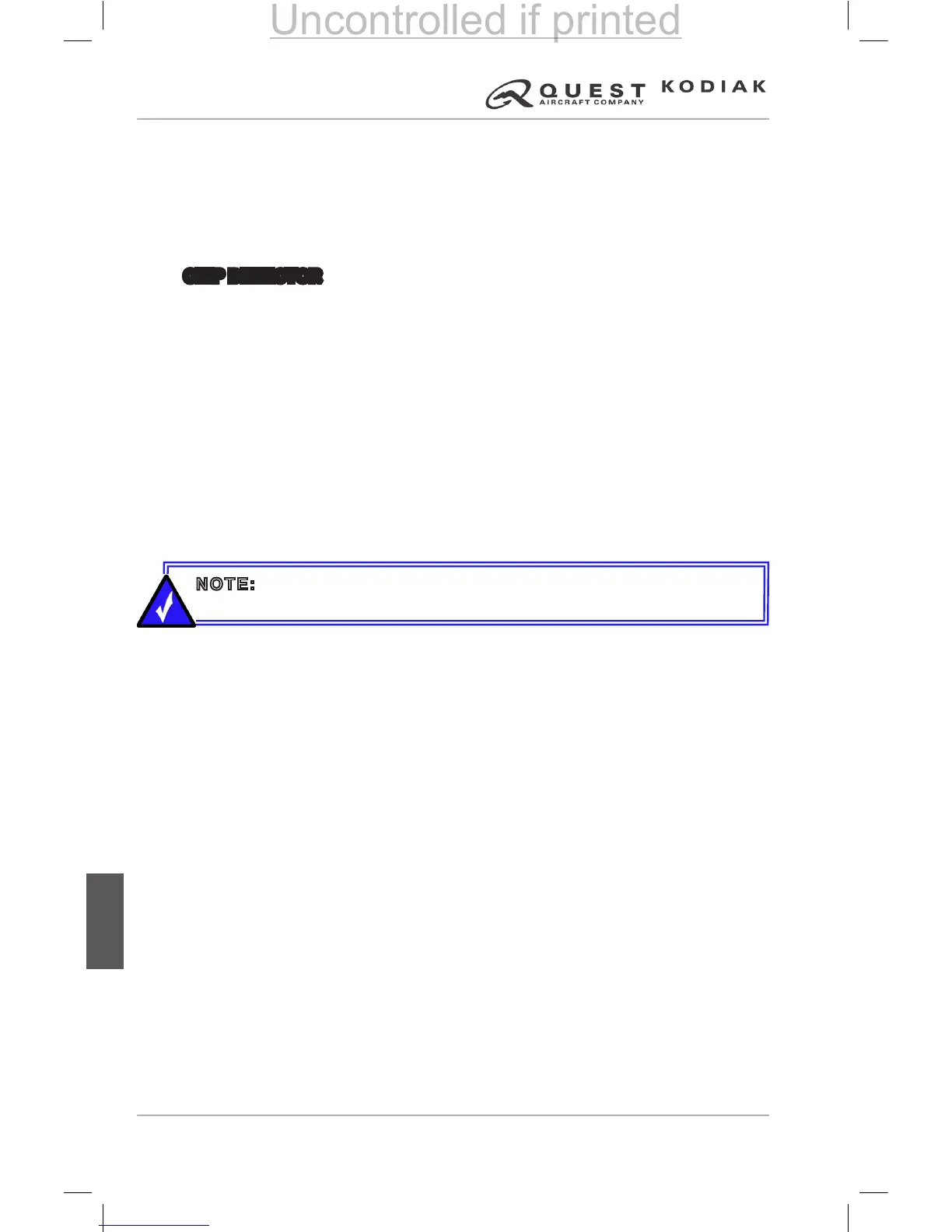Chip Detector
An optional chip detector may be installed on the bottom of the propeller
reduction gearbox. The chip detector should be checked by a maintenance
technician at regular intervals to help detect abnormal engine wear.
The G1000 software will show an annunciation if their are any metallic chips
detected in the gearbox. The chip detection annunciation will appear as:
CHIP DETECTOR
If the chip detection annunciation appears, follow the procedures described in
“Section 3” of this manual.
Oil/Fuel Reservoir
An oil / fuel reservoir is mounted on the lower left portion of the rewall.
This reservoir collects any engine oil or fuel discharge coming from the Fuel
Control Unit, accessory pads for the alternator, starter/generator and the
propeller shaft seal. This reservoir should be drained after each ight. A
drain valve on the bottom left side of the engine cowling allows the reservoir
to be drained easily into a suitable container for proper disposal. The normal
quantity of oil and fuel discharge per hour of engine operation is 12 cc into
the oil / fuel reservoir. If the quantity of oil and fuel discharge per hour of
operation is greater than that specied, the source of excessive leakage
should be identied and corrected prior to initiating further operations.
7-15 PROPELLER
The KODIAK is equipped with a Hartzell aluminum four-bladed, reversing
single-acting governor-regulated propeller. The propeller control lever
establishes the propeller speed through the governor and uses a single oil
supply from the governor to hydraulically actuate a change in blade angle.
A two piece aluminum hub retains each propeller blade on a thrust bearing.
A cylinder is attached to the hub and contains a feathering spring and piston.
The hydraulically actuated piston transmits linear motion through a pitch
change rod and fork to each blade, resulting in a change of blade angle.
While the propeller is operating, the following forces are constantly present:
spring force, counterweight force, centrifugal twisting moment of each blade,
and blade aerodynamic twisting forces. The spring and counterweight forces
attempt to bring the blades to a higher blade angle (low RPM or feather),
while the centrifugal twisting moment of each blade attempts to bring the
blades to a lower blade angle (high RPM). Blade aerodynamic twisting force
is very slight in comparison to the other forces and will generally tend to
increase the propeller blade angle.
This combination of the propeller forces results in the propeller blades being
brought to a higher pitch (low RPM or feather) and is opposed by a variable
force toward a low pitch (high RPM); the variable force is engine oil, under
pressure from the propeller governor’s integral oil boost pump. The engine-
NOTE: If the oil / fuel reservoir is not drained on a regular basis, the
contents will overow onto the ground.
